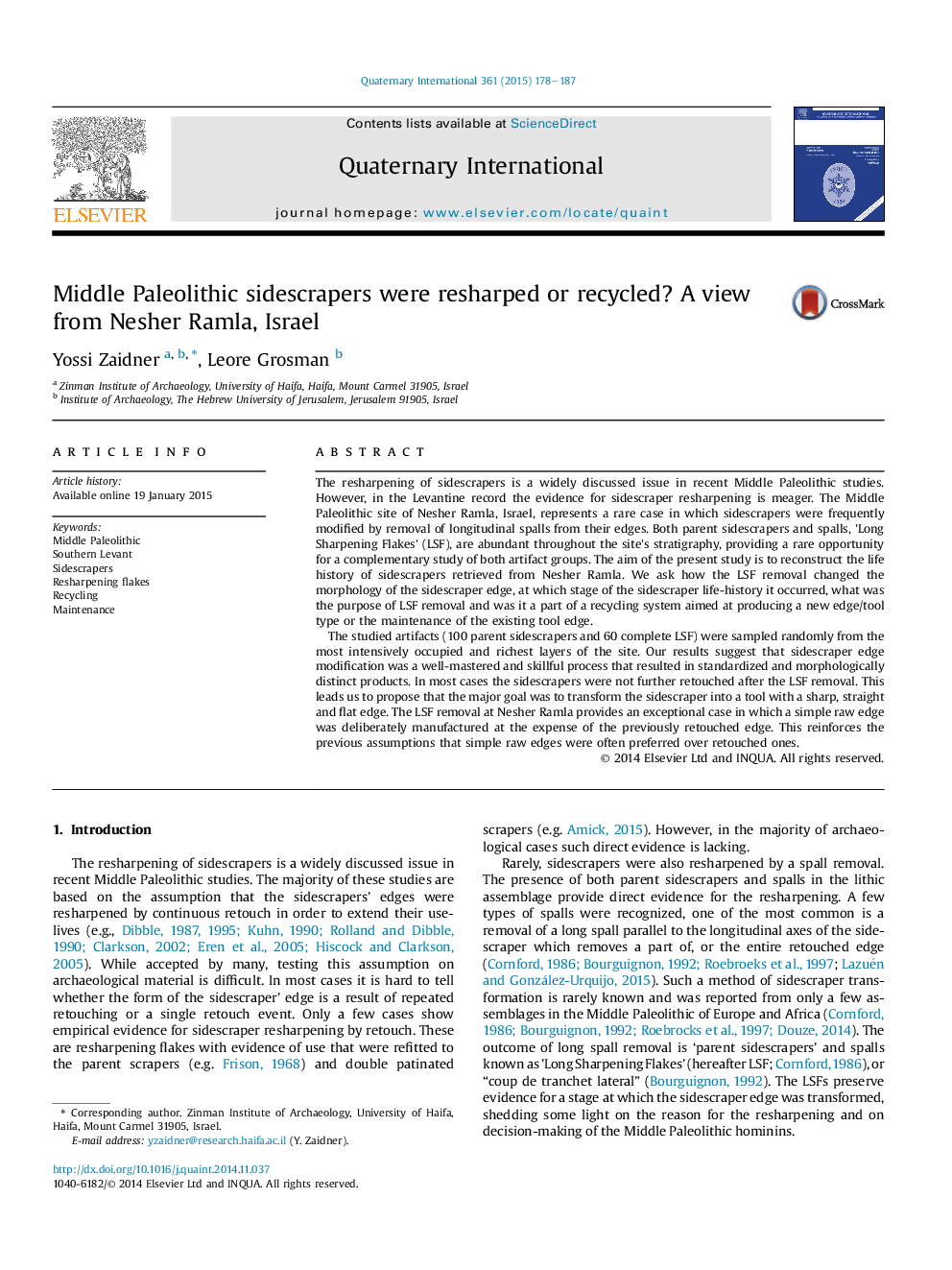| Article ID | Journal | Published Year | Pages | File Type |
|---|---|---|---|---|
| 1040930 | Quaternary International | 2015 | 10 Pages |
The resharpening of sidescrapers is a widely discussed issue in recent Middle Paleolithic studies. However, in the Levantine record the evidence for sidescraper resharpening is meager. The Middle Paleolithic site of Nesher Ramla, Israel, represents a rare case in which sidescrapers were frequently modified by removal of longitudinal spalls from their edges. Both parent sidescrapers and spalls, 'Long Sharpening Flakes' (LSF), are abundant throughout the site's stratigraphy, providing a rare opportunity for a complementary study of both artifact groups. The aim of the present study is to reconstruct the life history of sidescrapers retrieved from Nesher Ramla. We ask how the LSF removal changed the morphology of the sidescraper edge, at which stage of the sidescraper life-history it occurred, what was the purpose of LSF removal and was it a part of a recycling system aimed at producing a new edge/tool type or the maintenance of the existing tool edge.The studied artifacts (100 parent sidescrapers and 60 complete LSF) were sampled randomly from the most intensively occupied and richest layers of the site. Our results suggest that sidescraper edge modification was a well-mastered and skillful process that resulted in standardized and morphologically distinct products. In most cases the sidescrapers were not further retouched after the LSF removal. This leads us to propose that the major goal was to transform the sidescraper into a tool with a sharp, straight and flat edge. The LSF removal at Nesher Ramla provides an exceptional case in which a simple raw edge was deliberately manufactured at the expense of the previously retouched edge. This reinforces the previous assumptions that simple raw edges were often preferred over retouched ones.
